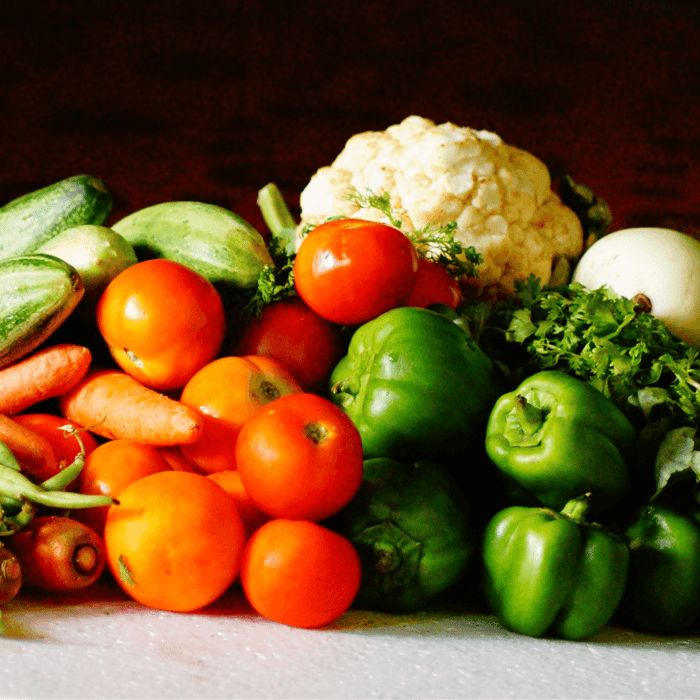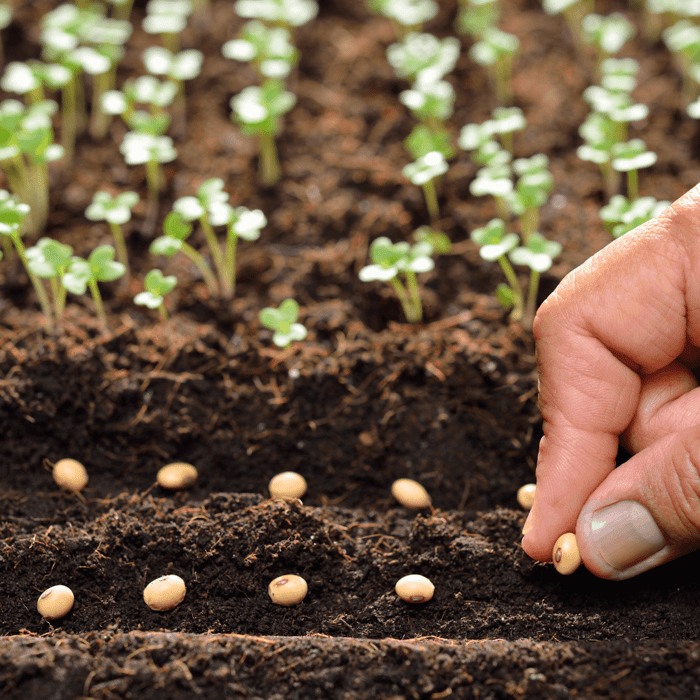Starting vegetable seeds indoors is a great way to jumpstart your garden and extend the growing season. Whether you're a seasoned gardener or just starting out, growing vegetables from seed can be an enjoyable and rewarding experience. In this article, we'll take a closer look at how to start vegetable seeds indoors and offer tips for ensuring your young plants thrive.
Choose the Right Seeds
The first step to starting vegetable seeds indoors is selecting the right seeds. When shopping for seeds, look for high-quality varieties that are suited for indoor growing. Vegetables that do well when started indoors include tomatoes, peppers, eggplants, lettuce, and herbs. Consider using heirloom seeds, which are open-pollinated and often have a rich history of cultivation.
Gather Supplies
Before you get started, make sure you have all the necessary supplies on hand. Here's what you'll need:
Vegetable Seed Vault Kit | 35 Variety Pack

$29.95
$49.95
Ultimate Survival Seed Vault: 16,000+ Non-GMO Heirloom Vegetable Seeds for Emergency Preparedness Introducing the Seed Vault Kit, your all-in-one solution for emergency preparedness and sustainable gardening. This premium seed kit contains over 16,000 non-GMO, Heirloom, Non-Hybrid, and Open Pollinated seeds,… read more
- Seed tray or small pots: You can use a seed tray or small pots to plant your seeds. If you're using small pots, make sure they have drainage holes.
- Heirloom Seeds: Check out our online store for high-quality heirloom seeds.
- Potting soil or seed starting mix: Use a high-quality potting mix or seed starting mix to give your seedlings the nutrients they need to grow.
- Grow lights or a south-facing window: Most vegetable seeds need at least 16 hours of light per day to germinate and grow properly. If you don't have a south-facing window that provides enough light, consider using fluorescent grow lights.
- Plastic wrap: Covering your seed tray or pots with plastic wrap helps retain moisture and heat, which can speed up germination.
- Heat mat (optional): If your indoor environment is cool, you may want to consider using a heat mat to keep your soil warm.
- Watering can: Use a watering can with a fine spout to water your seedlings gently.
- Seeds: Of course, you'll need seeds! Make sure to choose high-quality varieties that are suited for indoor growing.
Plant the Seeds
Once you have your supplies, it's time to plant your seeds. Here's how to get started:
- Fill your seed tray or pots with potting soil or seed starting to mix up to the soil line. Make sure to leave some space for watering later.
- Plant seeds according to their size, as a rule of thumb, is to plant seeds twice as deep as they are wide.
- Cover the seeds with soil, leaving about a quarter-inch of space at the top.
- Water the soil well but do not soak it.
- Cover the seed tray with plastic wrap to keep moisture in.
Provide Light
Most vegetable seeds need at least 16 hours of light per day to germinate and grow properly. If you don't have a south-facing window that provides enough light, consider using fluorescent grow lights. Hang the lights about 2-3 inches above the seedlings and keep them on for 16 hours per day. As the seedlings grow, adjust the lights to keep them 2-3 inches above the plants.
Heirloom Tomato Seeds for Planting | 16 Variety Pack
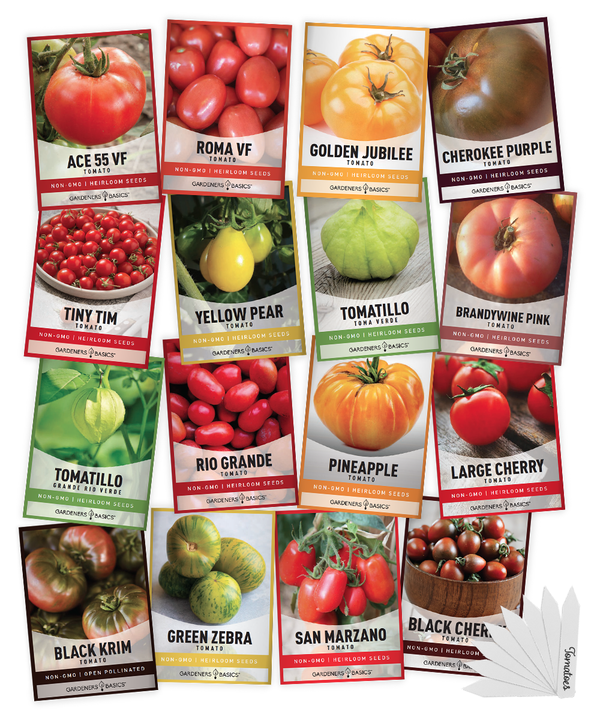
$19.95
The Ultimate Tomato Seed Variety Set - 16 Heirloom, Non-GMO Tomato Varieties for Your Home Garden Introducing our 16 Tomato Seeds Variety Pack, a must-have collection for any gardening enthusiast or professional grower! This premium seed assortment includes a diverse selection… read more
Maintain Temperature
Seedlings require specific soil temperatures to germinate and grow. The ideal temperature for most vegetable seeds is between 70-75°F. To keep the soil warm, consider using a heat mat underneath the seed tray.
Water Regularly
Seedlings need consistent moisture to grow, but overwatering can be harmful. Keep the soil moist but not soaking wet. Check the soil daily and water when the top layer feels dry.
Fertilize
Once your seedlings have their first set of leaves, you can start fertilizing. Use a water-soluble fertilizer and follow the instructions on the label. Fertilizing your seedlings regularly will help promote healthy growth and development.
Transplant to Larger Pots
As your seedlings grow, they will outgrow their small pots. When they have at least two sets of leaves, it's time to transplant them into larger pots. Make sure the new pots have drainage holes and fill them with potting soil. Gently remove the seedlings from their original pots and transplant them into the new ones, making sure to cover the roots with soil.
Harden Off and Transplant to the Garden
Before you transplant your young plants to the garden, they need to be hardened off. This means gradually exposing them to outdoor conditions like sunlight, wind, and temperature changes. Start by moving them outdoors for an hour or two each day, gradually increasing the time over the course of a week. Once they are acclimated, transplant them to your garden, following the instructions on the seed packet.
Tips and Tricks for Success
Here are some additional tips and tricks for starting vegetable seeds indoors:
- Use a seed tray with a clear plastic cover to create a mini greenhouse that retains heat and moisture.
- Use a high-quality potting mix instead of regular garden soil, which can be too heavy and contain weed seeds and disease organisms.
- Label your seedlings to keep track of which plants are which.
- Avoid overcrowding by planting only one seed per pot or cell.
- Check the soil temperature regularly with a thermometer to ensure it stays in the ideal range.
- Use a spray bottle to water delicate seedlings gently.
- Use a fan to simulate wind and strengthen seedlings' stems.
- Consider using a seed starting kit that includes everything you need to get started.
Heirloom Squash Seeds | 5 Variety Pack
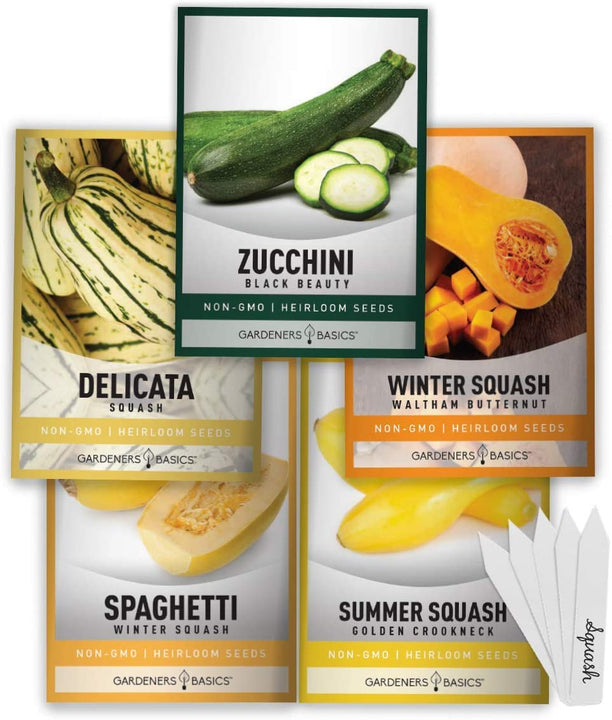
$9.95
5 Squash Seeds Variety Pack: Heirloom, Non-GMO, Open-Pollinated Squash Seeds for Vegetable Gardening Our 5 Squash Seeds Variety Pack is the ultimate collection for garden enthusiasts and squash lovers! Whether you're' a seasoned gardener or just starting out, this heirloom… read more
Common Problems and Solutions
Starting vegetable seeds indoors can be tricky, and there are a few common problems to watch out for:
- Damping off: This fungal disease causes seedlings to wilt and die. To prevent damping off, avoid overwatering, provide good ventilation, and use a sterile potting mix.
- Leggy seedlings: If your seedlings are tall and spindly, it's a sign they are not getting enough light. Move them closer to the light source or use a grow light instead.
- Mold: Mold can develop in humid environments. To prevent mold, provide good ventilation and avoid overcrowding.
- Transplant shock: Seedlings can suffer shock when they are moved to larger pots or transplanted to the garden. To minimize transplant shock, be gentle when handling the seedlings and avoid disturbing the roots.
Conclusion
Starting vegetable seeds indoors can be a rewarding and fun experience for gardeners of all skill levels. By selecting the right seeds, gathering the necessary supplies, and following the steps outlined in this article, you can give your young plants the best chance of success. Whether you're growing heirloom tomatoes or fresh herbs, starting seeds indoors is a great way to get a jumpstart on your garden and enjoy a bountiful harvest all season long. Now that you know how to start vegetable seeds indoors, what are the seeds you're going to start?
FAQ
Q: How do I know when to start seeds indoors?
A: The timing for starting seeds indoors will vary depending on the specific vegetable and your location. Check the seed packet for recommended planting times, or consult a planting calendar for your region. As a general rule, start seeds indoors 6-8 weeks before the last expected frost date in your area.
Q: Can I use regular garden soil for starting seeds indoors?
A: It's best to use a high-quality potting mix or seed starting mix for starting seeds indoors. Regular garden soil can be too heavy and contain weed seeds and disease organisms.
Q: How often should I water my seedlings?
A: Seedlings need consistent moisture to grow, but overwatering can be harmful. Check the soil daily and water when the top layer feels dry. Use a watering can with a fine spout to water gently and avoid disturbing the soil.
Q: Do I need to fertilize my seedlings?
A: Once your seedlings have their first set of leaves, you can start fertilizing. Use a water-soluble fertilizer and follow the instructions on the label. Fertilizing your seedlings regularly will help promote healthy growth and development.
Seed Safe Survival Seed Kit - 35 Variety Pack
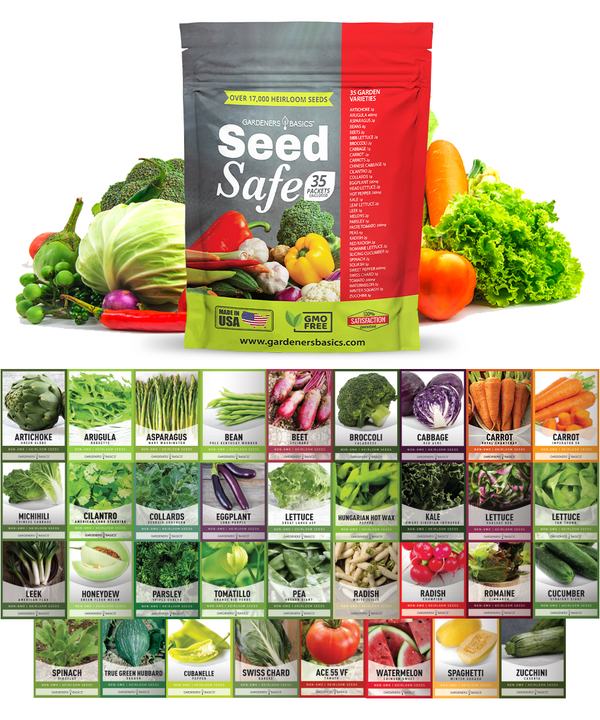
$29.95
$49.95
Seed Safe Survival Seed Kit: The Ultimate Heirloom Collection for Self-Sufficient Gardening Introducing the Seed Safe - 35 Varieties of Heirloom Vegetable, Herb, and Fruit Seeds, the ultimate solution for gardeners who want to secure a bountiful future harvest. This… read more
Q: Do I need to use grow lights for starting seeds indoors?
A: Most vegetable seeds need at least 16 hours of light per day to germinate and grow properly. If you don't have a south-facing window that provides enough light, consider using fluorescent grow lights.
Q: Can I transplant my seedlings directly from the seed tray to the garden?
A: It's best to transplant seedlings into larger pots before transplanting them to the garden. This will give them more space to grow and help prevent transplant shock. Wait until the seedlings have at least two sets of leaves before transplanting them.
Q: How do I prevent damping off in my seedlings?
A: Damping off is a fungal disease that causes seedlings to wilt and die. To prevent damping off, avoid overwatering, provide good ventilation, and use a sterile potting mix.
Q: What should I do if my seedlings become leggy?
A: Leggy seedlings are a sign that they are not getting enough light. Move them closer to the light source or use a grow light instead. You can also transplant them into deeper pots and bury the stem deeper to promote stronger growth.
Q: How do I know when it's time to transplant my seedlings to the garden?
A: Wait until the seedlings have developed sturdy stems and several sets of leaves before transplanting them to the garden. Make sure the soil is warm enough and the weather conditions are suitable for the specific vegetable you are growing.
Q: Can I reuse potting mix from previous seasons?
A: It's not recommended to reuse potting mix from previous seasons, as it can contain disease organisms and depleted nutrients. Use fresh potting mix each season for the best results.





